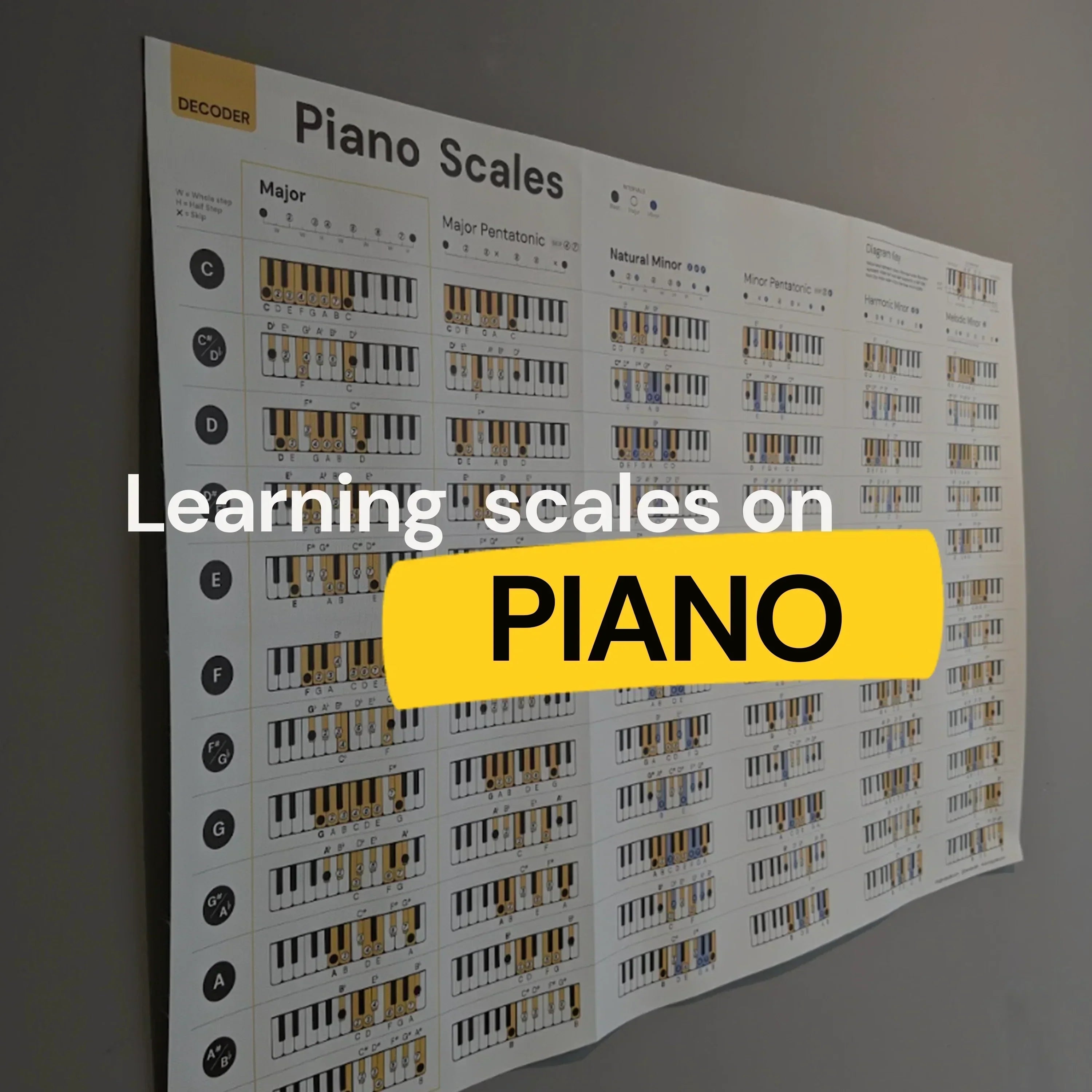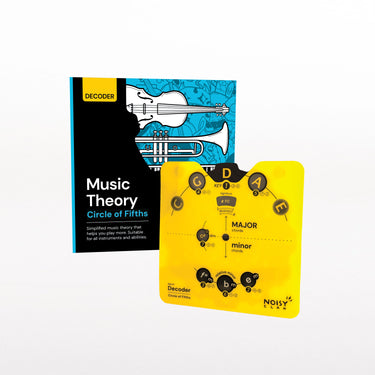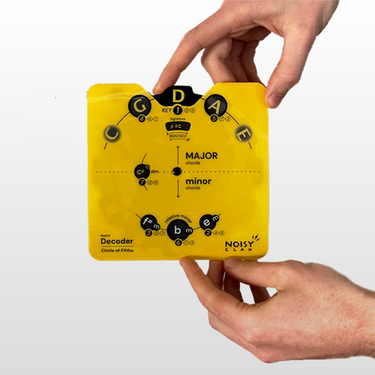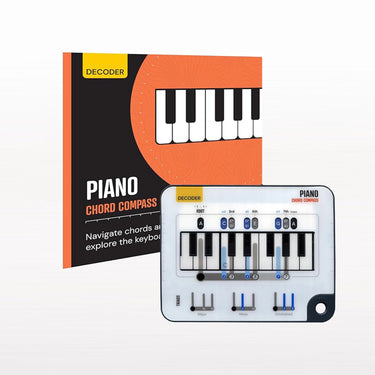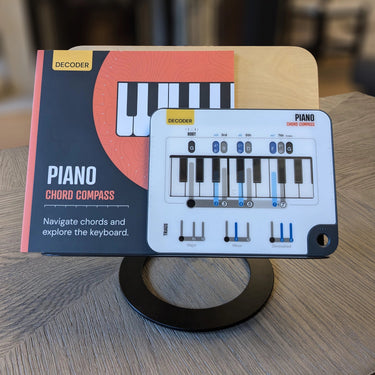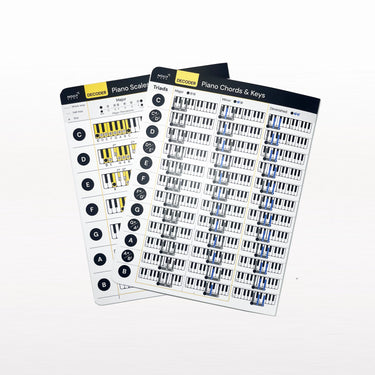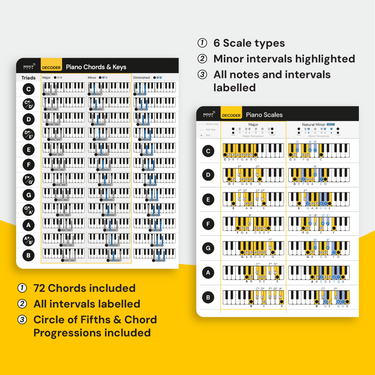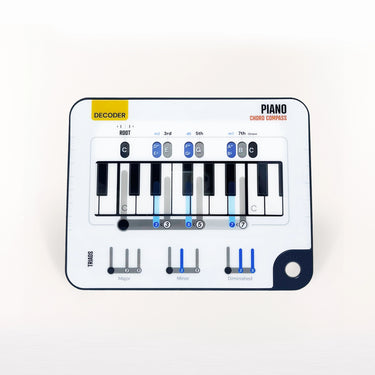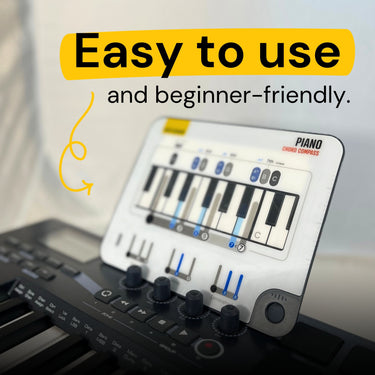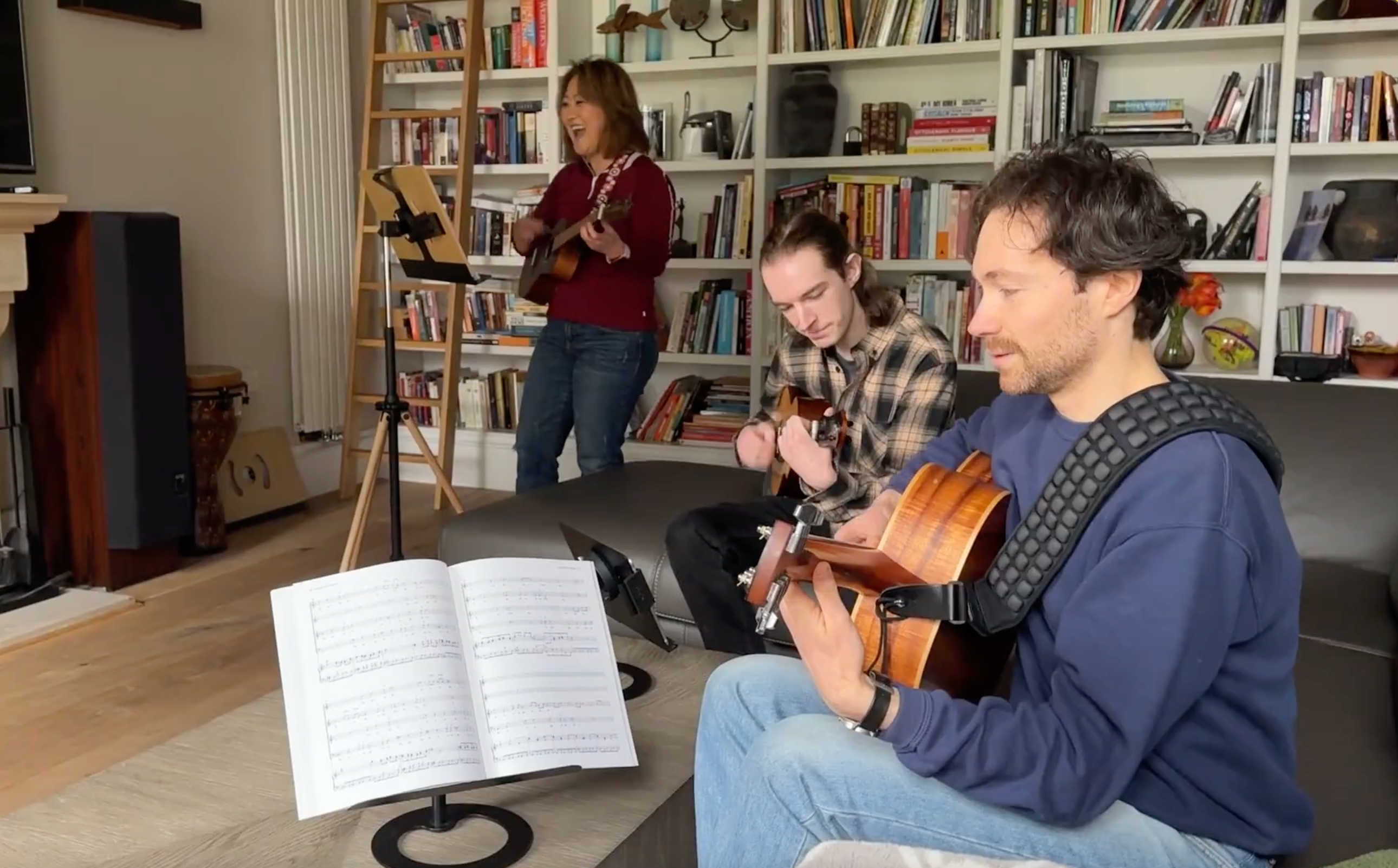Learning scales is a fundamental skill for any musician. It may sound like a cliché, but it's true. Once you understand the core principles behind scales, you can apply them to any key and any instrument. Piano scales function in the same manner as those on other instruments.
What differs between instruments is the way scales are played. For example, on the piano, scales are played by moving your fingers smoothly across the keys in a linear fashion. Either from left to right or right to left. Or up and down and vice versa.
For a deeper understanding of scales, check out our article.
Learning The Major Scale On Piano
The first step to mastering piano scales is getting comfortable with the major scale. Once you have it down, you can expand to minor scales and other scale variations. Need some extra help while practising? Check out our handy piano scales poster.
Major Scale Pattern On Piano
The major scale follows a set pattern of whole and half steps: W - W - H - W - W - W - H.
The easiest one to start with is the C Major scale it includes all the white keys and has no sharps or flats. You simply play them from C to C in any octave you like.

Here are some famous songs that use the major scale.
-
The Beatles - Let It Be (in C major)
-
Stevie Wonder - Isn’t She Lovely (E major)
-
ABBA - Mamma Mia (In D major)
-
Electric Light Orchestra - Mr. Blue Sky (in F major)
Let’s Start Playing
Exercise #1: Play a major scale starting from any note on the keyboard using the major scale pattern above as your guide. As you play the major scale name each scale degree as you play it. Be sure to start with the tonic, which is number one.
Exercise #2: Start on the G note and move your way up following the pattern. You'll find that you only need to play one black key, which is the F# located directly below the G note. This scale is in the key of G major.
If you want to know how many sharps or flats a key has, check out our handy tool “Decoder: Circle of Fifths.”
Memorise and Divide
The major scale structure consists of seven steps, but you can simplify it by focusing on its key points. The semitone intervals appear between the 3rd and 4th degrees and 7th and 8th scale degrees.
These half-step intervals are important in creating the scale’s sound. The 7th degree (leading tone) naturally resolves to the tonic, creating a sense of movement and resolution. Similarly, the 4th degree tends to resolve downward to the 3rd degree.

Learning The Major Pentatonic Scale On Piano
The major pentatonic scale is a simplified version of the major scale. By removing two specific notes, you create a smoother, more open sound. The major pentatonic scale is a favourite of many musicians, because it's so easy to use.
Major Pentatonic Formula On Piano
The pattern for the major pentatonic scale is: W - W+H - W - W - W+H.
By omitting the 4th and 7th degrees from the major scale, the pentatonic version eliminates the tension created by semitone steps. This makes it easy for improvising, because it's difficult to play 'wrong notes'.

The major scale and major pentatonic are very similar. This means that the shape that you learned before can easily be repurposed for pentatonic scales. Simply omit the 4th and 7th scale degrees from the major scale shape to play the pentatonic scale. Here are some examples from popular songs:
-
My Girl - The Temptations (Intro guitar riff is in C major pentatonic)
-
Don’t Stop Believin- Journey (the verse vocal melody is in E major pentatonic)
-
Take Me Home, Country Roads - John Denver (chorus melody in A major pentatonic)

Let’s Start Playing
To internalize the major pentatonic scale, play it slowly and say each scale degree aloud. Try this progression:
-
Going up: 1, 1-2, 1-2-3, 1-2-3-5, 1-2-3-5-6, 1-2-3-5-6-8
-
Back down: 1-2-3-5-6, 1-2-3-5, 1-2-3, 1-2, 1
Learning The Minor Scale On Piano
The minor scale is a staple of many music styles, including classical, jazz, and rock. Once you understand the major scale, forming a minor scale is simple. Just lower three specific notes by a half step:
-
The major 3rd becomes a minor 3rd.
-
The major 6th becomes a minor 6th.
-
The major 7th becomes a minor 7th.
Here are some popular examples of the Minor scale:
-
Somebody to Love - Jefferson Airplane (uses F#m scale in the chorus vocal melody)
-
Adelle - Rolling In The Deep (Verse vocal melody is in Cm, although it leans towards Cm pentatonic)
-
Audioslave - Like a Stone (Verse melody is in Gm)
Minor Scale Formula
The natural minor scale follows this pattern: W - H - W - W - H - W - W.

Relative Minor Scales
Each major scale has a relative minor that shares the same key signature. For example, the A Minor scale contains the same notes as C Major, but starts on A instead of C, giving it a distinct sound and tonality.

Comparing Major and Minor Scales
Exercise #1. Play the C Major scale while naming the degrees, then switch to A Minor using the same notes. This allows you to hear the difference in mood and tonality.
Exercise #2. Compare the major and minor scales on the same tonic note. Play the major scale and name each scale degree. After going full circle up and down, on the same tonic note you play the minor scale. Don't forget to name the scale degrees and notice the difference in sound.
Learning The Minor Pentatonic Scale On Piano
The minor pentatonic scale is derived from the minor scale by omitting two notes, resulting in a more open and consonant sound.
Minor Pentatonic Blueprint
The minor pentatonic scale follows this sequence: W+H - W - W - H+W - W.
This scale is widely used in blues, rock, and jazz due to its versatile nature. The minor pentatonic uses exactly the same notes as the major pentatonic scale starting on the 6th scale degree from the major scale. Here are some minor pentatonic examples from popular music.
-
The Temptations - Papa Was A Rolling Stone (the bass line and verse vocal are in Bb minor pentatonic)
-
La Grange – ZZ Top (A minor pentatonic riff and vocal melody)
-
Superstition – Stevie Wonder (Em pentatonic riff)

Let’s Start Playing
To practice the minor pentatonic scale, try playing it in this order:
-
1-3-4
-
3-4-5
-
4-5-7
-
5-7-8
-
8-7-5
-
7-5-4
-
5-4-3
-
4-3-1
Strategies for Learning Scales
To master scales more effectively, try the following techniques:
-
Play them slowly in both ascending and descending order.
-
Say the scale degrees aloud as you play.
-
Try singing the scale without using the piano.
-
Improvise over different backing tracks in major and minor keys.
-
Use scales creatively to compose small melodies or solos.
Practising scales consistently will strengthen your finger dexterity, deepen your theory knowledge, and improve your improvisation skills on the piano.




